There was little doubt when the Polaris collection debuted at SIHH back in January that it would be a hit. A fresh line of sport-luxury watches in Jaeger-LeCoultre’s portfolio was a major step forward in continuing to develop the brand’s offerings. Not only was this new line a welcome addition, it also tapped into a remarkable period within Jaeger-LeCoultre’s long history and revived a long-cherished model and design in the form of the Memovox Polaris. Recently, we had a chance to sit down with Stéphane Belmont, the Director of Heritage and Rare Pieces for Jaeger-LeCoultre, to discuss what went on behind-the-scenes to bring such an iconic model back to life in the form of a new collection, where the brand can grow in coming years, and what his day-to-day workload is like.

How long have you worked at Jaeger-LeCoultre?
It’s been 20 years but I regularly changed positions. I started in distribution then I moved to product marketing, communication, technical development, creation, and so on. Every time you change position you see the company from a different perspective which makes it actually quite interesting to see all the assets of a company.
What is it about Jaeger-LeCoultre that has captivated you for so long?
It’s just the richness of the company. The product has such a strong identity that you know it is stronger than even the brand and that’s something you hardly find in other brands. And just the watchmaking and know-how, the diversity of all the mechanical movements that are being created, all the functions, and the way that’s still in the 21st century. We invent many new functions like the Gyrotourbillon, the Sphérotourbillon, and all the Hybris Mechanica collection. I mean at Jaeger-LeCoultre you can create things that nobody else can do. And to use that know-how to enrich the experience of the regular watches, that’s something that seems to be very useful.
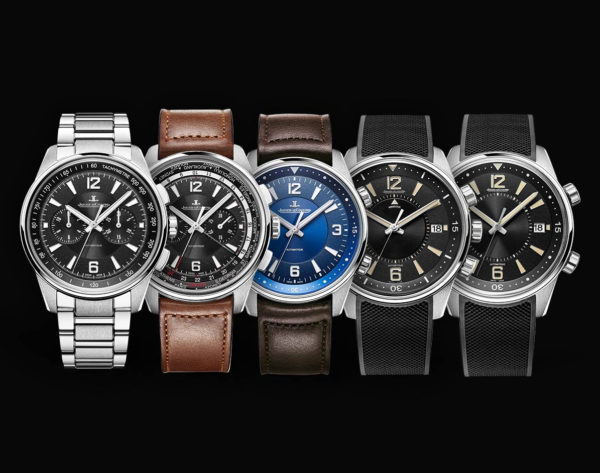
In that 20 years, how have you seen Jaeger-LeCoultre evolve?
I think the brand now has become an international brand whereas 20 years ago it was more of a European brand. When I joined the company, three-quarters of our sales were Reverso watches and we used to sell them to France, to Germany, to Switzerland, and to Italy. That was our main market. Since then, we managed to enrich the collections with the Master Control which was already there but a bit behind the Reverso and we extended it with new complications, with new functions. There was an extension with the Master Tradition which featured more complicated watches. Then we also created the Duomètre, which is a one of a kind watchmaking concept and more recently we launched the Rendez-Vous. It was a need five years ago and since then it has become the second best selling collection for the brand. So we managed to more or less balance the feminine products with the masculine products.
Now you have a more balanced portfolio.
It’s important to have a balanced portfolio and to have a large diversity of products but all of them with their own tradition. That makes the evolution of the brand, which was more of a European brand that became an international brand with a larger product portfolio, have a very strong nucleus like the Rendez-Vous collection. And hopefully the Polaris will get there but it’s a bit too early to say.
Does the Polaris collection represent a new, sport-luxury territory for Jaeger-LeCoultre in its recent history?
Not exactly. If you look at the history of Jaeger-LeCoultre we have always had a more standard model. We had the Deep Sea, different versions of the Deep Sea, we had the Master Compressor models. But you’re right, there was not a single collection with all the diversity of [sport] function, true. And today we wanted to have one collection and not just standard models. So in that sense, yes it is a new segment. Even if you look at the history of the Polaris we actually, at that time, we launched every model one after the other. So we didn’t come with the one collection. But we started with one model and then two years after we launched the second one. So it was a different way of launching the collection. And we felt today if you want to be successful you need to come [with a full] collection right from the beginning. Also, to show that you stand behind the collection, show that it’s something that is meant to last, and that’s very important for people, for customers to have the feeling that the watch they buy is going to be something that will last over time.
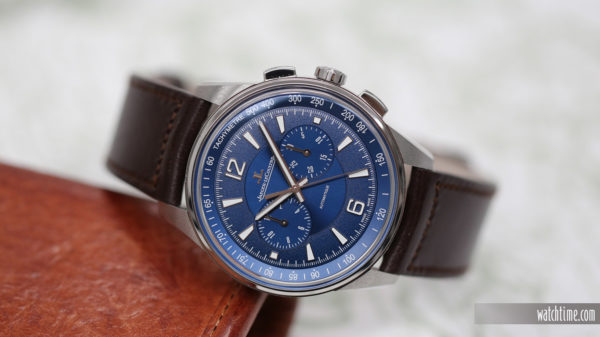
As you said, in your 20 years you’ve seen Jaeger-LeCoultre grow on a more global scale, now we see the establishment of a firm luxury sports line with many different options. What are some potential areas of growth that you see for the brand over the next few years?
We developed the brand over the last few years mainly in the Asian market. All our classic watches were actually the main growth drivers. For tomorrow, I think we’re going to have to ensure that we also have a certain growth in the European and the American market. And for that, we need to probably work more on the basics, on the attractive models like the Reverso, like the Polaris, like maybe some Masters. We need to bring something from our history into the current collection to create some models that would be attractive, where you have a design that looks more like today, a bit more modern, more contemporary. And we need to work on those models for the entry-level [range]. Sometimes it’s more difficult to create an interesting entry-level watch rather than making Hybris Mechanica. But I think that’s part of the success. Looking at the history of Jaeger-LeCoultre, we used to send more than 50% of our watches to the United States between the 1930s until the late 1970s. The American market was a huge market for Jaeger-LeCoultre. And now we need to understand the reason why at that time we were successful and today we are less successful in the US. Looking at the past history, we saw that we created specific models for the American market. For instance, when we launched the Deep Sea, the first diving watch with an alarm in 1959, there was one model for Europe, which was actually for the whole world, and one specific design at the time for the American market. And it was very successful. You adapt the product to the local culture or you adapt it to make it more relevant for the market. And I think that’s something that we need to probably integrate much more, you’re feedback, you’re know-how of the market, in the design of the new collection. So for Polaris, it would mean we could make a specific Polaris for the United States-
People would really identify with that.
Absolutely. And most of the cool names of Jaeger-LeCoultre were given by our agent that used to sell Jaeger-LeCoultre at the time where we were so successful in America.
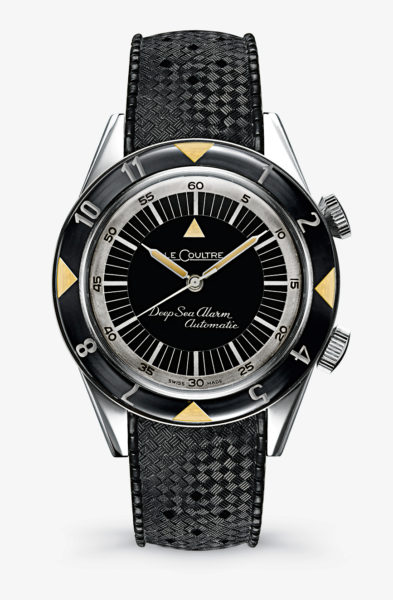
Really?
Yeah. So in Europe the Polaris was not called Polaris it was called, I think, Memovox Diving, or it was also sometimes called the Deep Sea because it came out after the Deep Sea. But the Polaris was a nickname that was given by the American agent to this collection. Same for many other models. You might know there was a Barracuda watch, another diving watch, there was a Shock watch, there was also the first automatic watch that we called Powermatic. And, the idea for some version of the Powermatic, they called it Nautilus. So we used the Nautilus [name] long before Patek Philippe. And, actually, that’s the watch that James Dean wore. He wore a Powermatic Nautilus with the black dye. We have to be very thankful to the American team because they helped to create some cool names that are part of our brand identity. But they very much created that identity. So I think for the future we need to also create that experience with the American market to add some coolness or add some specific models for the American market. That’s very key to the success of the brand.
What does a typical day for you look like?
There is no day that looks alike. That’s what I like about Jaeger-LeCoultre and particularly about my job is that there is no one day that looks the same than the others. I travel a lot because I used to also represent the brand.
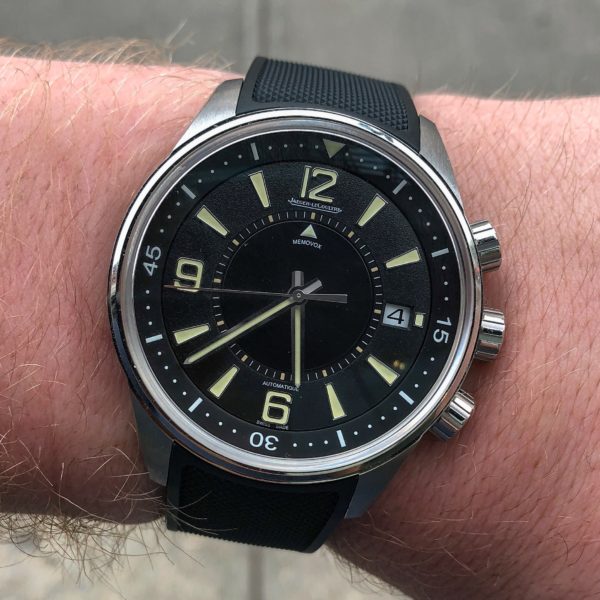
Do you spend a lot of time sourcing vintage models for the museum?
We search for vintage models on the market. I know quite well all the competition so I’m also in touch with a lot of VIP customers who would like to really experience all the complications of the brand. And you have to really go into the details and explain what makes the difference. You need to enrich the experience and when you go into all the details of the creation, of the mechanics behind the watch. You need to bring the stories. You need to tell the stories of the product, the stories of the brand. We welcome a lot of clients at Jaeger-LeCoultre in Switzerland so I also go with the VIPs or with a group of collectors to have lunch with them. Every day is a different day and that’s what I love about Jaeger-LeCoultre. Everyone is involved in many different things. You’re not just in charge of one thing. But everyone feels in charge of the whole company and that makes the job very, very interesting.
So going back to the Polaris collection for a moment. Within Jaeger-LeCoultre, how did the concept of bringing the greater Polaris collection to life happen?
Well we had, I said, a lot of different models, each standalone. We thought we need to create a collection. So we know that it’s more difficult to create the new collection rather than a single watch and using that history to create a new collection. So we search in our history which models were quite interesting in terms of sport watches. So the two which were very different than the others were the two diving watches with alarms, the Deep Sea and the Polaris. They were the only diving watches with alarms, not the classic rotating bezel, which makes them totally different from the others. And then what made us go for the Polaris is just actually looking at the collectors and they are just so keen on the Polaris. And for the last 20 years, the prices of the Polaris went up on the second-hand market because collectors really wanted to have this product. And that was the model, in terms of a sports model, that was the most appraised by the collector market.
The Holy Grail.
Yeah, exactly. And that’s why we thought if everyone really likes this model it’s because there’s something special. And then we tried to detect and analyze in details the historical model to know what was important in terms of design, in terms of the crystal, what elements should we keep, what elements should be improved and so on. Working on that then you start to really understand why the watch was attractive and such a success. Sometimes you have watches that are very successful but that do not reflect the identity of Jaeger-LeCoultre. And the Polaris was actually a very different watch. It was a big watch. It was a watch where the design had little to do with what people know about Jaeger-LeCoultre. But if you look carefully you would have elements like the dial, you have the four Arabic numbers that you find also in all the nautical watches. You have the trapezoidal indexes. You have the different finishes on the dial. So when you study the watch, it’s a real Jaeger-LeCoultre watch. All the elements, all the DNA of the brand, are in the product. So that made us confident to make this watch because you could really feel it. It’s real. It has the identity of a Jaeger-LeCoultre watch.
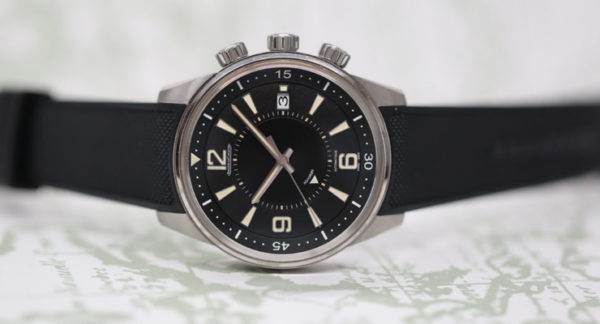
How long was the Polaris collection, as a concept, in development for the brand?
We’d been talking about the Polaris for at least six, seven years before. It took a long time to really first decide that we wanted to go for the Polaris. And then to find out how we wanted to do that. The original one, we thought it was a bit too dated. So we decided to make a new one. But we explored a very modern design. It took us a long time to really find the right balance and to make a lot of prototypes and so on. So all of these [decisions] take actually quite a lot of time. From first deciding to go for the Polaris then working on identifying which elements were key, which elements are to be improved, and how to integrate functions without losing the identity. Usually, when you put too many functions, you just have no more space for the graphics. We debate a lot. Should we put the date? It’s quite practical but the elements of the designs look better without the date. So for all of this, we need to go and talk to our teams on the market. We love to have their opinions. All of this takes time until you finalize an agreement and you’ve built the collection.
Are there any plans to make the new Polaris Memovox into a production model in the coming years?
I don’t think so. Because Memovox is something for the enthusiast. The market of Jaeger-LeCoultre is quite small and for the Memovox it’s an even smaller niche. That’s why we created the Date [model] which has the same design but it’s more approachable in terms of the price. Memovox is not something that you really see every day. 1,000 pieces is already a lot for the market.
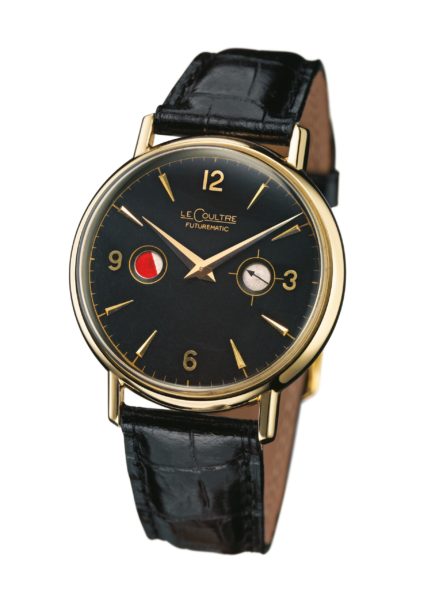
Looking through the history of Jaeger-LeCoultre, are there any vintage models that you personally would love to bring back as a re-issue?
Yes, the Futurematic. It was one of the first automatic watches and because it was automatic, we decided to design the watch with no winding crown to highlight that fact. It was actually designed so that when the power reserve was getting low, it would stop. If it stops, you would take the watch and there was always a bit of energy available so that it would start to work right away. There was also a device to prevent the overloading of the barrel so at certain times there was a pin going out that would stop the winding segment to wind the watch too much. It was full of small innovation. The watch had a small second but not at 6 o’clock, it was at 9 o’clock. And on the other side to balance the design there was the power reserve indication. So it was called Futurematic and actually, it was highlighting the future and was full of innovation. It’s a very interesting model in terms of design and in terms of technique.
Click here for our hands-on review of the Jaeger-LeCoultre Polaris Memovox.
Click here for our hands-on review of the Jaeger-LeCoultre Polaris Chronograph.
Click here for our conversation with Lionel Favre, the Product Design Director for Jaeger-LeCoultre.

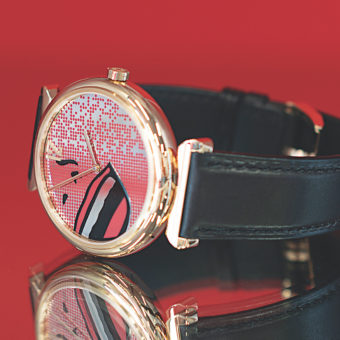
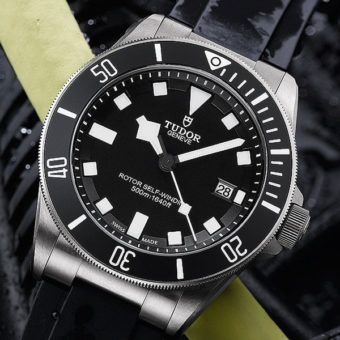
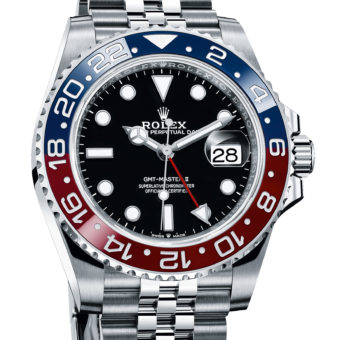

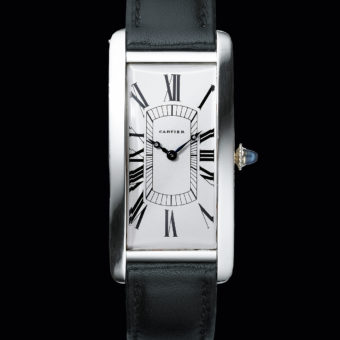
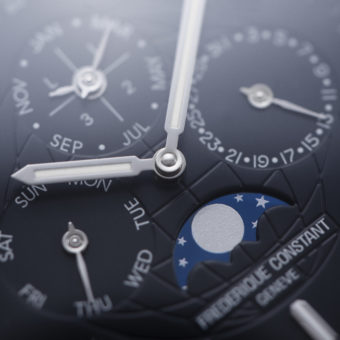
I have a 1937 Jaeger-lecoultre watch I would like to sell. Only serious offers I know what it is worth . It needs a gear replaced bit it is an easy fix
Very nice article. Mr Stéphane speak with passion and from the heart. Jaeger LeCoultre is one of the Richemont Group’s brands that have not followed a downward trend like Panerai and IWC. For the sake of the J-LC that I have in my collection I hope they will continue that way.